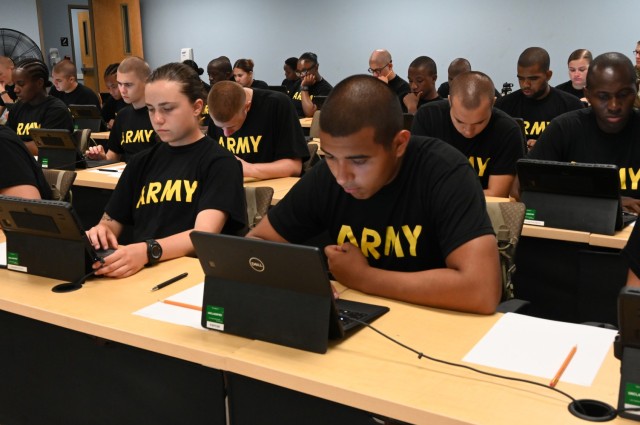Future Soldier Preparatory Course now offers recruits opportunity to do both academic, fitness tracks | Article

JOINT BASE LANGLEY-EUSTIS, Va. (May 23, 2023) – A new modification to the U.S. Army’s Future Soldier Preparatory Course is providing recruits who need help in meeting the Army’s accession standards another option to overcome potential barriers to service.
Based on the initial success and data gathered during the Future Soldier Preparatory Course pilot, the U.S. Army will now offer recruits the opportunity to do both the academic and fitness tracks.
VIEW ORIGINAL
Based on the initial success and data gathered during the Future Soldier Prep Course pilot, which only allowed recruits to participate in either the academic or fitness tracks, recruits are now able to enroll in both tracks of the course.
“The initial results from the Future Soldier Preparatory Course have been promising and have given thousands of young men and women a chance to join our ranks,” said Lt. Gen. Maria Gervais, the U.S. Army Training and Doctrine Command Deputy Commanding General. “This modification to the course is going to increase the quality of individuals entering basic training and provide additional opportunities for our Nation’s youth to serve in our all-volunteer force.”
From August 2022 to early May 2023, more than 8,500 students have attended the course, of which 6,188 students have already graduated and shipped to basic combat training.
In the academic track, 95% of students moved up at least one test category and increased their test score by an average of 18 points. In the fitness track, 87% of students graduated within their first four weeks, with an average weekly body fat loss of 1.7%.

Based on the initial success and data gathered during the Future Soldier Preparatory Course pilot, the U.S. Army will now offer recruits the opportunity to do both the academic and fitness tracks.
VIEW ORIGINAL
Eligibility and Process
The dual-enrolled program is open for individuals looking to enlist in the active-duty Army, Army Reserves, and National Guard. Recruits enlisting into the Army through this program are eligible to receive the same pay, bonuses, and incentives as all other recruits.
Recruits in the dual-enrolled option must have a high school diploma or equivalent, an Armed Services Vocational Aptitude Battery (ASVAB) test score between 21-49, and a body fat percentage between 2-6% over the Army accession standard based on gender, age, and height/weight.
All dual-enrolled recruits will first attend the academic track of the Future Soldier Preparatory Course.
Dual-enrolled recruits with an ASVAB score of 21-30 will start in the academic track at Fort Jackson, S.C. and have up to 90 days to test into a higher test category, with opportunities to test out every three weeks. These individuals will enlist as a delayed trainee and will have their enlistment contract renegotiated upon testing into a higher test category and provided a Military Occupational Specialty (MOS) based on aptitude scores and needs of the Army.
Recruits enlisting in the dual-enrolled program with an ASVAB score of 31-49 will start in the academic track at Fort Moore, Ga. (formerly Fort Benning) for up to 30 days and have one opportunity to score into a higher test category. Recruits in this track who improve at least one test category may be able to renegotiate their contract and receive the incentives offered in their new test category. If they qualify for a priority or shortage MOS, they will be offered the opportunity to select the new MOS based on the needs of the Army.
Upon completing the academic track, all dual-enrolled recruits will have their body fat percentage measured. Those whose body fat percentage is within 2% of the Army accessions standard will move directly to basic training. Those who still exceed the 2% standard will move to the fitness track at Fort Jackson for a maximum of 90 days.
Recruits will not move to basic training until their body fat percentage is within 2% of the Army accession standard based on gender, age, and their height/weight.
The Army will continue to assess and scale the Future Soldier Preparatory Course to ensure we are successfully preparing and building quality recruits.
“We are confident given the right instruction and professional support these recruits will be able to perform successfully and meet or exceed the standards expected of every Soldier,” stated Gervais. “We will continue to find innovative ways to unlock a prospective Soldier’s potential without sacrificing the quality needed across our force.”


